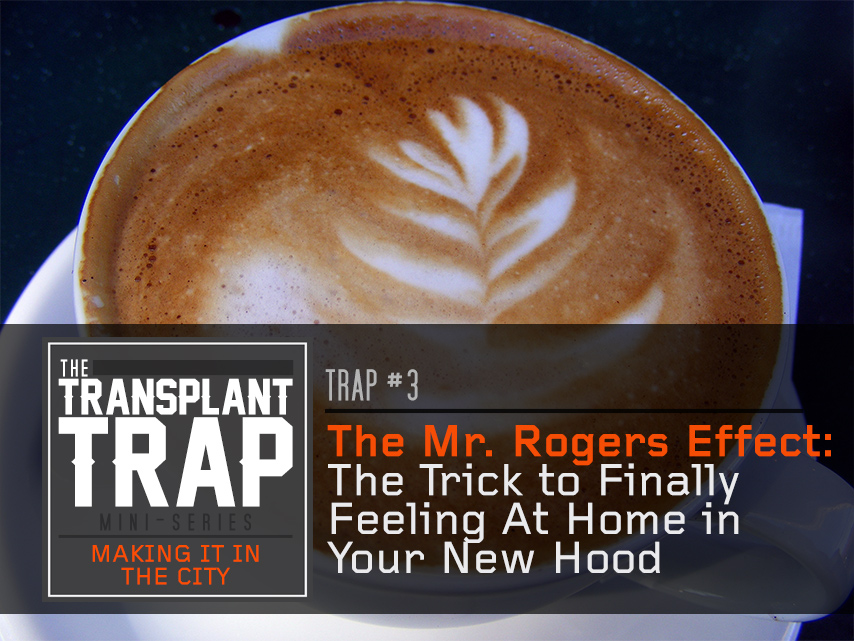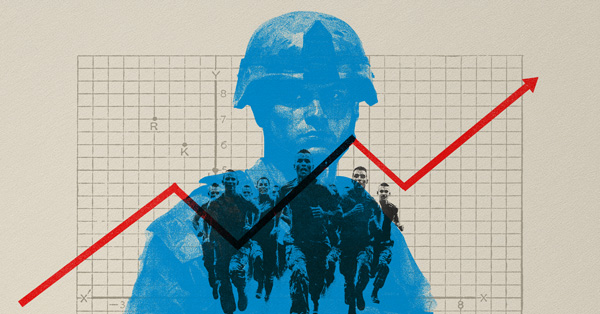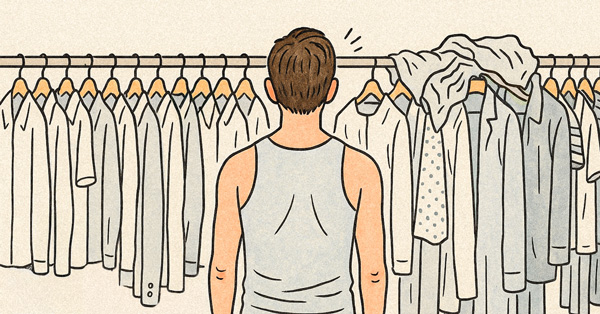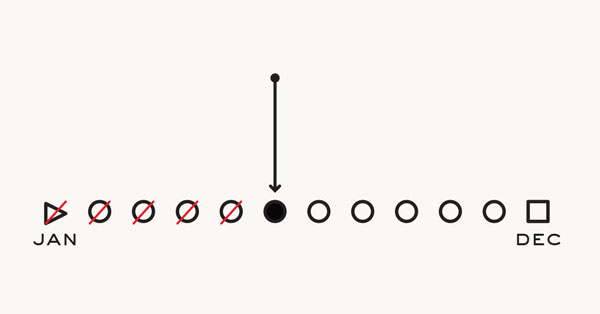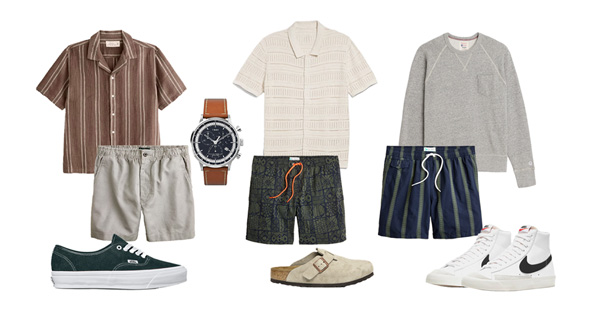This is Part 3 of the The Denizen Society's Transplant Trap Miniseries, our three part guide to helping you build a better life in a big city. Check out part 1: The Default Dream: Are You Wasting Precious Time and Energy Chasing the Wrong Passion? and part 2: The Sandlot Paradigm: How Smalls, Benny and the Beast are Screwing Up Your Social Life
The big city can be a hectic and unfamiliar place to live. Besides transit-based dilemmas like traffic, parking tickets, and shoddy metros, we’ve also got to deal with the extremely high cost of living, densely packed urban corridors and – of cours – the often narcissistic people crammed into them. And when all of this inevitably culminates in a grand cacophony of stress and anxiety, it's no wonder most big city transplants are left feeling nothing but discomfort, unease and alienation in their new community.
What most people don’t know is that this stuff doesn’t just make us feel shitty, but can also drastically impair the degree of success that we reach in our career and social life, too. The overwhelming stress of big city life is precisely the reason that so many people who actually put in the hard work day after day, still have so much trouble building the success that they’re after. Because regardless of whether or not you’ve managed to dodge the first two traps, this one holds the trump card and is more than capable of sending you packing for home all on its own. This very fact is precisely why this final Transplant Trap –seemingly inconsequential on the surface– is actually the most devious of them all.
In this lesson, we’re going to take a cue from our old pal Mr. Rogers and show you how to start bonding with your city instead of battling it so that you can finally breakthrough and start making the headway on your goals that you deserve.
A Quick Primer On Willpower
In order to really understand how this trap works, you’ve got to know a bit about willpower and how it can influence your success. If you’re a regular reader here at Primer, then you’re probably familiar with the way that willpower works, but just in case it’s been a while, we’re going to give you a brief refresher.
Essentially, willpower is the primary activating force that fuels all of your goal-seeking efforts. Getting out of your comfort zone to chat with more girls at the bar or making the decision to knock out a few hours of work on your side project before bed rather than plowing through the 4 episodes of New Girl burning a hole in your DVR (don’t be ashamed, we watch it too). Point is, without willpower, you’d eventually succomb to the inumerable obstacles that inevitably pave the path to success. Boredom, stress, a lack of confidence in your ability to succeed; willpower is the force that helps you to persevere, grit down and charge through these barriers.
Sounds great, right? Well, the catch is that we only have a limited amount of willpower reserves in the tank at any given time so we’ve got to be extraordinarily judicious about how we choose to spend them. Unfortunately, it’s not always up to us. In fact, a number of external influences – particularly the physical environment that surrounds us – weigh heavily on how those reserves are spent. And yes, you guessed it, the big city is one of the most taxing physical environments that you can be in.
You see, even though willpower is a naturally depleting resource, that process is only exacerbated by the strenuous, chaotic environment of the hustling, bustling city. Think of it like this, if willpower is the fuel that we rely on to get us from point A to point B, chasing our goals in the big city is like driving a Hummer instead of a Jetta.
So what are we to do? After all, the big city is the one place we go to build things. To achieve goals. “Started at the bottom now we're here.” How are we supposed to make any headway on our dreams if we’re constantly being drained of the fuel that's supposed to get us there?
Well, we’ve got two options available to us: 1) Figure out how to slow the draining of our resources, and 2) Find a way to refuel them more often. And for that answer, we turn to a familiar cardigan wearing comrade.
“Won’t You Be My Neighbor” – The Mr. Rogers Effect
Now maybe Mr. Rogers was just some guy who happened to be really good at entertaining children and decided to parlay his affinity for sweaters into a lifelong career in the limelight, but we prefer to think of him as a sort of cardigan-cloaked, undercover philosopher who aspired to not only change the world, but affect the way that people relate to it. Grandiose? Maybe, but bare with us.
While we certainly won’t pretend to know exactly what he had in mind when he opened each episode with those familiar words (“won’t you be my neighbor”), we like to think that he was getting at something a bit deeper. A subliminal social mantra? Perhaps. A community’s call to arms? Possibly. Or, maybe just a subtle suggestion that we adopt a new outlook on the world. One in which, rather than looking at our environment and the people in it, as a place of danger, we instead see a welcoming, comforting and connected community. A place where we can feel safe and confident that we belong.
Sounds like an awfully valuable lesson for those of us trying to make it in the hostile metropolis where, more often than not, most transplants position themselves at odds with their environment and in direct opposition to the very people and places that make up their community.
But if you can figure out how to get in tune with your city, the exhaustion, stress and depletion that inevitably result from the constant big city battle that we all face, will be lifted from your shoulders. When this shift happens, you’ll not only retain more of your willpower reserves, but be able to refuel them faster.
And like many of the other strategies that we’ve discussed thus far in this series, there are many ways to go about this and we encourage you to do some exploring of your own. That said, we’re fairly confident that we’ve identified one of the quickest and most effective routes to becoming more integrated with your community –and if not, definitely the most fun.
The Value of Becoming a Regular
Have you ever walked into a coffee shop and been greeted by name? Your latte foamed before you even open your mouth, your whole wheat bagel mid-toast as you step up to the counter. It’s nice isn’t it? But it’s not just convenient or friendly, it's comforting. It’s inviting. It’s inclusive.
Well, what better way to trick your subconscious into feeling like part of the community than building a support group of local hot spots in your new hood? While most of us have achieved some degree of “regular” status back home, many people think that in a big city it simply isn’t an option. We think that just because Mr. Dunhill serving pints from behind the bar has been replaced by some slick, mustachioed dude in suspenders who looks like he belongs in a 1930s Dolce & Gabbana ad, that there's no opportunity for that locals camaraderie we once enjoyed. But the truth is, big city bars, restaurants and coffee shops really do respect a regular and –if you play your cards right (just right)– are more than willing to bring you into the coveted circle of trust.
Now we’ll admit, usually this is a long process that plays out over a length of time involving lots of careful vetting and steady, natural relationship building… but we don't exactly have time for all of that, which is why we interviewed a few of LA's most pompous and picky bartenders, restaurant managers and baristas for suggestions on how to expedite the process.
Don't Under Tip, But Don't Over Tip Either
Listen, nobody likes a shitty tipper, but service industry people in big cities are like the hot girls in the bar and they can sniff out a suck-up a mile away. Which means that while trying to impress your waitress with a $20 spot on a $20 tab might earn you an extra-special “thank you,” don’t expect it to buy you a spot on their tight knit roster of regulars.
Instead, tip a tad bit above the customary 20% the first few visits (25% should do), but as you begin to visit more regularly, settle around 20-22%. They’ll take notice, respect you and you won’t have to scale back your student loan payments just be make a few new friends.
Off Hours Are Best
Instead of showing up at prime time when the restaurant is bustling and your bar man is busy Harlem shaking your Missouri Mule in a Bostin Tin (or whatever), aim for off hours when the staff isn’t stressed and they have time to sit and chat a little. Also, you’ll likely be one of the only few people in the place, so the odds of you getting lost in a crowd of booze fiending babes all vying for the attention of the handsome dude chiseling ice sculptures behind the bar, are a bit smaller.
Shoot for 9 or 10pm for bars, 11am for coffee shops and 4:30pm for restaurants. Obviously every spot has their own unique rhythm so you may have to test this out a bit (or just call and ask).
Best Conversation Fodder is Observation
The days of lamenting the loss of your lifelong love to the bartender are over. The guy who has to spend 5-7 minutes crafting tinctures and splaying garnishes, doesn't exactly have time to help you out with your existential crisis.
But if you want to start building rapport with the bar man/woman, just sit back and observe. Notice what's going on in the bar. What's the pace or mood? What people do they have to deal with? My go-to move is to commiserate with a server after they inevitably have an altercation with a particularly dickish customer, “Wow, never knew anyone could be so particular about their latte art.” Honestly, this will win them over every time. Point is, keep the conversation contextual and relevant.
Solo Mission Before Brolo Mission
We recommend going in solo at first, it’ll give you a chance to build some one-on-one rapport. Bring along a sketchbook, journal or iPad and just lay low. That said, once you've managed to squeeze in a few solo missions, feel free to bring in a couple of buddies, it’ll show them that you’re not a complete loner and they’ll appreciate you spreading the word about their place –especially if you’re bringing in business in the slower hours of the day.
Most importantly though, just get out there and start involving yourself in the community. The more integrated you become with your city, the more at ease you’ll feel throughout the day and the less you’ll struggle to retain that sweet, sweet willpower nectar. Pretty soon, you'll not only have a collection of mini-comfort zones built up around the city, but you're bound to be the proud recipient of the unsolicited scone, side of sweet potato fries or, my personal favorite, undercover tequila shots. Welcome to the neighborhood.
For more tips on how to feel more at home in a big city (including a day-by-day breakdown of how to become a regular at any bar in about two weeks), get The Denizen Society's free Transplant Trap Minicourse HERE.



